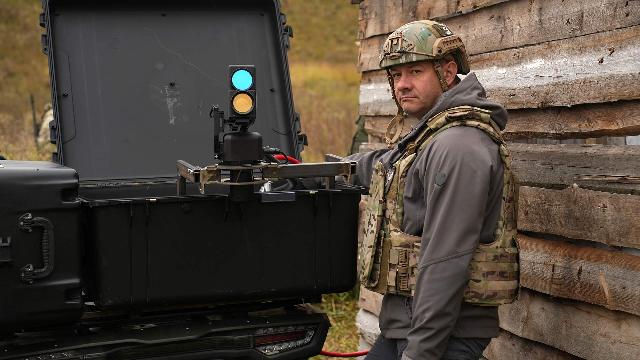The sappers have a lot of work to do in the liberated territories due to the large amount of explosives left.
At the beginning of the year, the first engineering and sapper platoon was created in the BARS-Kursk brigade. By August, it had grown to a battalion. Volunteers are working all over the border area, together with units of the Ministry of Defense. Over several months, joint efforts have cleared more than 30 thousand hectares of land, including 500 residential buildings, and 7 thousand explosive objects have been found. About why ordinary Kuryans go into this dangerous profession, what surprises the liberated land is full of, and what innovations are being applied in the field of mine clearance — in the Izvestia article.
Locals, kuryans
Work is a bottomless land — it is painful to state, looking at the endless fields and forests through which the battles swept and where it is now impossible to step. Together with the commanders of the BARS-Kursk engineering and sapper service, we are heading to the Belovsky district, where a special laser for the remote destruction of explosives will be tested today. To clear the earth of tons of deadly metal, new effective ways are simply needed, and progress does not stand still.
The head of service in the brigade is Anton Glushkov, call sign Miron. He joined BARS a year ago as a simple fighter. Today, he heads and develops a new (and highly sought-after) direction.
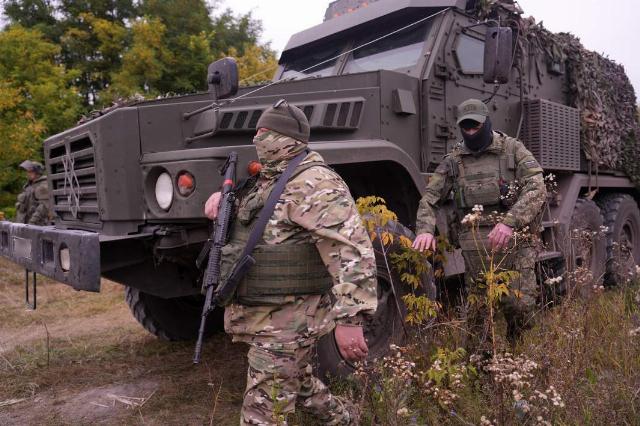
On mine clearance
Image source: Photo: IZVESTIA/Sergey Prudnikov
— It all started in February with seven guys, — says Miron. — They were trained at the international center of the Ministry of Defense of the Russian Federation in the Moscow region, and started working. In May, it was already a company. Today it's a battalion. We proved very quickly that we could, that we were effective. An important role is also played by the fact that most of our sappers are locals, Kuryans. They purposefully go into this profession, they want and consider it necessary to clean their land.
According to Miron, priority when choosing objects is given to settlements — courtyards, housing developments (where, despite the prohibitions, people continue to return). Industrial sites, fields, and forests are also being cleared. It is worth noting that in May 2025, the law on granting BARS-Kursk fighters the status of military veterans came into force, which ensured the influx of new volunteers from all over Russia. In the near future, the management of the engineering and sapper service plans to create a separate platoon of unmanned mine clearance operators who will help clean up the area using UAVs.
Ironclad rules
Melnyk is the platoon commander. He enrolled in BARS in the fall of 2024, when, according to him, what was happening affected him personally - the village where his mother's house was located came under occupation. He served for five months in the 5th company in the most difficult Tetka area, where it is difficult to get to — all bridges are (still) destroyed, 7.5 km to the border with Ukraine, fire attacks do not cease day or night. In 2025, he transferred to the engineering department. First of all, I was a sapper in the army. Secondly, the same desire to help the small homeland played a role. "The grandchildren will come there sometime anyway!" he says, referring to his parents' house.
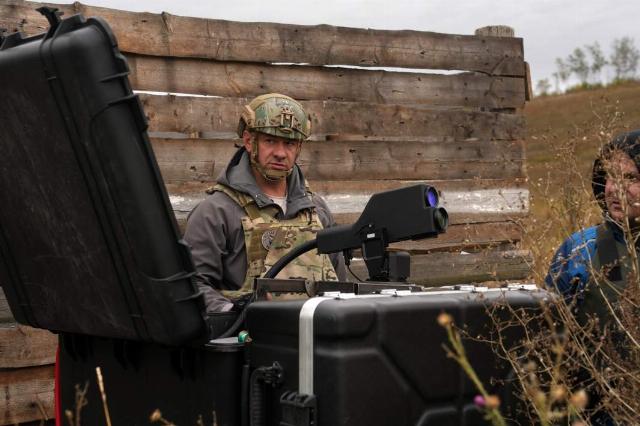
Laser installation of remote mine clearance
Image source: Photo: IZVESTIA/Sergey Prudnikov
Among the modern methods of mining, which were out of the question in his youth and which are actively used by the Armed Forces of Ukraine today, Melnyk identifies discharges using cluster warheads, Baba Yaga, and aircraft-type drones. The big problem is "jonics" — mines with magnetic sensors that react to metal or movement. Sappers are not surprised by explosive "surprises" in the form of toys, cell phones, backpacks, helmets, car tires and even food.
The fighters' schedule is 25 days in the border area, 4 days in the rear on vacation. Equipment and tools — 28-kilogram protective suit, helmet, Kalashnikov, probe, metal detector. The doors to the examined houses are opened with a "cat" and only then they follow themselves. The ironclad rule is "don't put it on, don't take it off." The most dangerous is destroyed by an overhead charge on the spot, something is taken to landfills. Often, my interlocutor shares, it is necessary to find the bodies of the dead, including civilians, including children.
At a safe distance
The laser cannon we are going to test was designed by one of the Moscow companies dealing with thermal imagers. Representatives of the company are following along with us, they took the initiative to test the device in the field with the possibility of further deliveries. The commanders and fighters of the LEOPARD and the Ministry of Defense will observe the new generation of equipment. Nothing like this had ever been used before in the sapper business in these units, or indeed at the front.
The target for the laser is an anti—tank mine
Image source: Photo: IZVESTIA/Sergey Prudnikov
"A laser beam burns through the metal of an ammunition at a distance," Alexander, the company's CEO, explains to me. — If there is a detonator inside, the mine explodes. If not, it burns out on the spot. The advantage of the technology is that a person does not have to approach a dangerous object to eliminate it. That is, the sapper discovered it, fixed it, and then the car comes into play.
The installation includes a generator, a battery, and the laser emitter itself with a camera. The weight of the device together with the battery is about 50 kg. The power is 1 kilowatt. The operating cycle is five minutes of active mode, 15 minutes break: the equipment needs to cool down. However, as the designers explain, it takes only a few tens of seconds to burn through the shell of the mine.
48 seconds per TM
At the training ground, the soldiers take some ammunition and drag them onto the field. The first is a TM—62 anti-tank mine, the second is a thermobaric grenade from an RPG—7, the third is a shaped charge dropped from a Ukrainian "bird" - imported, with Arabic script on the body, and the fourth is an anti-personnel MON-200. They are installed on the ground at a distance of 70-100 m from the laser. There are no detonators inside. The task is to burn it quickly and efficiently.
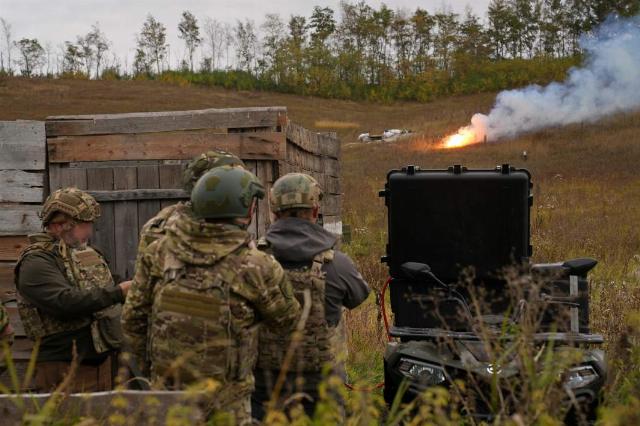
The object was destroyed
Image source: Photo: IZVESTIA/Sergey Prudnikov
The device moves on an ATV. The mine targets are in the line of sight. The laser turns on, and the cooling fans whine inside. The light beam itself is not visible, only when it hits the target, it makes itself felt with a bright flash, similar to welding. If such a beam falls on a person's body, an instant burn is guaranteed, the most vulnerable area is the eyes. It is noteworthy that they can, for example, also cut the fiber-optic threads of flying drones. A large scope of application on the "citizen" is cleaning power lines from foreign objects, pruning tree branches.
It is controlled using a tablet. The newly installed mines appear on the screen: the camera has a 37x magnification. For the test, the beam is directed first at the dry branches of the shrub — they immediately flare up like gunpowder. Then it's the turn of the warheads.
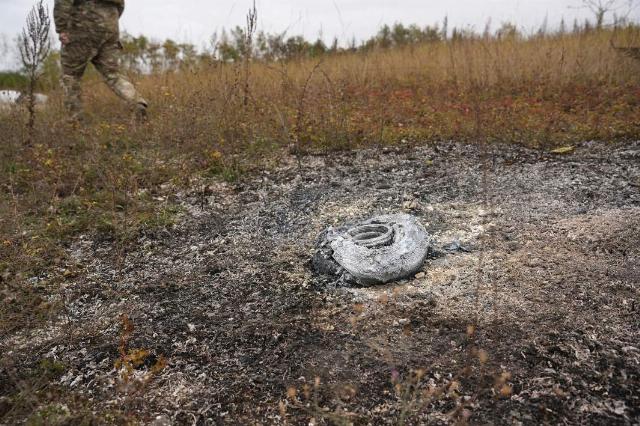
All that's left of the TM-62. I didn't have to use the overhead charge
Image source: Photo: IZVESTIA/Sergey Prudnikov
It takes 48 seconds for a 9-kilogram anti-tank mine to ignite: the body is easily burned through, after 15 minutes only a round skeleton and a pile of ashes remain on the ground. We have to hide in a shelter, in case of unforeseen emergencies. However, everything passes without incident — four mines are disposed of promptly and silently.
"The remote approach shows its worth, the tests were successful," state both the inventors and the military. Improvements to the device and a subsequent decision on its purchase are possible ahead.
In the meantime, the old ways. When we leave, the LEOPARD fighters deliver another batch of shells discovered in recent days by car to the detonation site.
Sergey Prudnikov
